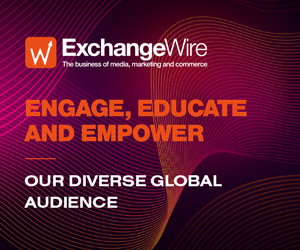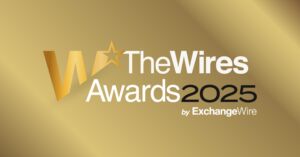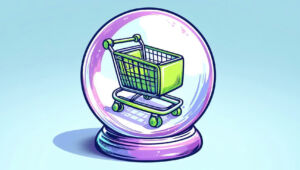Navigating Brand Safety in 2025: Insights from the Ad Industry
by on 6th Oct 2025 in News

As the ad industry evolves, what is the state of brand safety in 2025? We questioned a range of industry experts on the topic, gathering their insights on how advertisers can navigate it.
Does brand safety still matter?
We’ve been living through a tumultuous timeline when it comes to brand safety, as new risks rear their head and many old obstacles remain.
Brand safety on social media has become more of a minefield over the past few years. When it comes to social platforms, X has set an excellent example of what not to do, unless the goal is to turn away advertisers by the masses. The platform has been on a chaotic trajectory since Musk’s takeover in 2022 and the fall of Twitter as we knew it. The figures speak for themselves: X’s ad revenue has seen consistent year-over-year declines since June 2022, with the biggest coming in at 27% after June 2024.
Ironically, Meta was inspired by X’s content moderation loosening. At the start of the year, the social media giant announced its plans to follow in X’s footsteps, scrapping fact-checking measures and opting to introduce a Community Notes model in its place. “We’ve seen this approach work on X,” Joel Kaplan, Chief Global Affairs Officer had explained.
Deciding to loosen content moderation has certainly not turned out to be as chaotic for Meta – many advertisers shrugged their shoulders, and the platform hasn’t lost advertisers as a result, despite the pivot. Quite the opposite: in Q2 this year, Meta reported 21% ad revenue growth.
Does this mean brand safety is becoming less important for advertisers?
VideoElephant's Kate Doughan outlined why brand safety does very much still matter.

“Maintaining a brand safe environment is crucial for attracting and retaining premium advertisers, building trust with audiences, and promoting long-term, sustainable growth. Brand-safe environments reassure both consumers and advertisers that publishers are committed to quality and integrity, strengthening relationships with partners and audiences.
When it comes to video, specifically, it's important to use high-quality videos from vetted sources with proven editorial standards enabling publishers to avoid controversy and to place videos in contextually appropriate environments matching both the publisher’s and advertisers’ brand values.”
Adnami’s Stevie Antonioni echoed the importance of brand safety, also stressing the risks of falling behind on methods.

“The promise of brand safety is highly relevant and always will be, but the methods used today are outdated. Static blocklists, for example, often remove valuable premium inventory which in turn hurt both publishers and advertisers. Curation on the other hand is an overlooked avenue for brand safety as it can balance out the DSP’s exclusive focus on cookies, limit the spread of MFA sites, and create a healthier balance within the digital advertising ecosystem.
Looking ahead it will be interesting to watch how Novacap’s plans for IAS unfold. It will also be interesting to keep an eye on both Mantis & Scope3 as they seem to be reinventing the category.”
A quest for quality media
The open web is becoming much more challenging for advertisers to navigate, too.
ExchangeWire research carried out in collaboration with Lumen looking specifically at the issue of MFA sites, found that the advertisers surveyed were wasting up to more than half of their ad spend this way. They estimated that as much as 55% of their ads were still going to MFA websites, with an average of 15.3%.
Seedtag’s Sarah Petitt delved into the problem, looking at how the journalism industry is being affected by the rise in MFA sites.

“Brand safety is at a crossroads. The open web is under pressure, and without change we risk accelerating the decline of quality journalism – already evident in the loss of local and regional newsrooms. Two main forces drive this: reduced traffic from algorithmic engines and outdated brand safety tools that limit publishers’ ability to monetise.
Keyword blocklists remain the industry’s default, yet they often flag neutral or even positive reporting, unfairly penalising news and politics publishers. This cautious, exclusion-first approach shrinks monetisation opportunities and threatens the sustainability of trusted news.
The solution lies in context. Advances in AI now allow for nuanced understanding of sentiment, meaning, and tone – separating unsafe content from legitimate reporting. By embracing AI, advertisers can protect their brands while ensuring quality journalism continues to thrive.
The future of brand safety lies in moving beyond blunt exclusion toward smarter, context-driven solutions that protect brands and sustain quality journalism.”
OpenX's Tyler Romasco also expanded on the troubles low-quality sites can cause for advertisers.

“The way the industry thinks about brand safety has evolved: It’s no longer simply about playing defence and avoiding bad placements, it’s become part of a bigger conversation about overall media quality. With a finite amount of premium inventory out there, advertisers want to be sure their budgets are going toward real, high-value opportunities that actually perform.
Today, advertisers expect more than simply steering clear of harmful or unsuitable content: They want assurance that their investments are reaching real people, in environments that align with their brand values, and ultimately driving measurable outcomes. Premium, direct publisher coverage, MFA controls and inventory quality tools, supply-side targeting capabilities, and bid request integrity are all being considered as a part of buyers’ consideration of platforms.
This means brand safety will be less about drawing lines around what to avoid and more about establishing a higher standard for what to pursue. The bar for quality media keeps getting higher, and that’s a good thing. The future of programmatic media belongs to buyers who demand quality supply and take granular control of their investments.”
What other challenges are emerging?
With innovation and constant change come new challenges. Algorix’s Pranav Kataria examined other challenges in brand safety as the space evolves.

“In 2025, brand safety continues to evolve within a complex and privacy-conscious digital landscape. While the goal remains keeping ads away from harmful content, the focus is expanding to brand suitability, ensuring ads appear in environments that reflect a brand's values and tone.
New challenges have surfaced. Stricter regulations, more sophisticated fraud tactics, and fragmented supply paths make brand safety harder to manage. The rise of CTV and other emerging formats adds to the complexity, each bringing unique safety and measurement issues.
There's growing adoption of AI-powered, context-driven tools that assess content in real time. But issues like false positives, deepfakes, and limited transparency are still concerns. Advertisers are also asking more of their partners, expecting proof of ROI, attention, and media quality.
Looking ahead, the space will depend on adaptive AI, clearer standards, and better collaboration to keep pace with evolving risks without compromising user experience or consumer trust.”
Meanwhile, Hannah Cooke from digital marketing agency Charlie Oscar, provided insight on the challenges from an agency perspective and what she feels is needed moving forward.

“What were once manageable concerns have multiplied dramatically with AI-generated content, the explosion of social platforms, and the rise in UGC. Advertisers are juggling more risk than ever before.
A real problem is platform governance – or lack of. Inappropriate content is slipping through constantly, and the controls we need simply aren't strict enough. Now we're dealing with deep fakes, synthetic media, and unvetted content that our existing brand safety tools weren't designed to catch.
For agencies, the challenge is daunting: we're protecting brands against exponentially more threats across exponentially more surfaces. We can no longer rely on platform assurances alone, requiring additional verification layers and real-time monitoring.
Moving forward, we need standardised governance frameworks with genuine accountability. Brand safety must evolve from reactive defence to proactive partnership, with transparent, independently audited controls across all content types.”
What else is changing?
According to Pete Wallace, GumGum’s general manager of EMEA and JAPAC, a more holistic view of media placement is emerging.
“In 2025, brand safety has quietly shifted from dominating industry headlines to becoming table stakes. That should not be mistaken for diminished importance: breaches remain wholly unacceptable, and the expectation is that every technology partner upholds rigorous thresholds. Increasingly, however, brand safety is being absorbed into a broader definition of media quality, where price, content type, and predicted attention levels are weighed together to determine effectiveness.

What’s emerging is a more holistic view of media placement, where safety is one vital element but no longer the sole determinant of value. Advertisers are layering in new measures of quality, from premium versus user-generated environments to predictive signals that indicate whether an ad is likely to capture attention and drive business outcomes. This shift reflects a marketplace that prizes not just protection from risk, but active confidence in the impact of investment.
Ultimately, advertisers will thrive by viewing brand safety not in isolation or as a standalone layer, but as an integrated component of quality and outcome-driven media investment.”

Elsewhere, illuma’s Sonia Pham shared how she believes the industry is changing through collaboration between different players in the ecosystem.
“Brands, agencies and publishers have been struggling to find meaningful innovation in the brand safety space for some time. But the industry now appears to be coming together more in order to build better ways of working, and we are seeing more cross-collaboration across agencies, publishers and software companies like ourselves.
The technology is also catching up. For example, recent developments with LLMs and AI are leading to double-digit percentage improvements in accuracy for classification and avoidance.
Transparency will be key moving forward; no one is willing to put up with opaque practices where they have little control, so those who are willing to engage meaningfully and present creative solutions backed by data are most likely to succeed.”
AI is creating both new risks and opportunities
Adform’s Jurjen de Wal and Aceex’s Dariia Kutsopal both expand on how AI is bringing about new risks for advertisers, but also opening doors to new opportunities.

“Brand safety remains anchored in the fundamentals of control and transparency. Advertisers need to protect their reputations and trust the environments in which their campaigns appear. What has changed is the context; what once seemed straightforward is now far more complex.
The rapid and unpredictable growth of AI-generated content, particularly in the walled gardens, has introduced new risks. Of course, AI has also created new opportunities. It now enables far more nuanced, real-time assessments of content, tone, and suitability, moving beyond blunt instruments like keyword blocklists or broad persona assumptions. This allows advertisers not only to protect their campaigns better but also to achieve more effective contextual alignment with their objectives.
Premium, open web environments, featuring high-value and engaged audiences, remain where advertisers can exercise the greatest control and confidence over their media. For ad tech partners, brand safety cannot remain static; it must continuously evolve to keep pace with these changes. By combining transparency, nuanced evaluation, and advanced AI capabilities, advertisers can safeguard their campaigns while simultaneously driving game-changing outcomes.”

“In 2025, brand safety has evolved from a defensive measure into a strategic imperative. For those of us working in programmatic and oRTB, the challenge is no longer just about blocking unsuitable content. Now that is more about ensuring ads serve in environments that are contextually aligned, trustworthy or value-driven.
Generative AI has transformed both opportunity and risk. While it enables more precise contextual analysis, it also fuels deepfakes and synthetic misinformation that can erode consumer trust at scale. At the same time, increasingly fragmented media landscapes and shifting privacy regulations demand more agile, interoperable solutions across the ad tech ecosystem.
The near future of brand safety lies in collaboration: advertisers, publishers, and tech partners must move beyond reactive controls toward proactive, transparent standards. Who knows, maybe the winners will be those who can guarantee not only safe placements, but authentic, accountable, and value-aligned digital experiences.”
The responsibility lies with advertisers
According to Happydemics’ Baptiste Graffin, the responsibility lies with advertisers to make sure they are harnessing all the tools at their disposal.

“Brand safety in 2025 isn’t just blocking bad content; it’s deliberately choosing environments that strengthen your brand. Context shapes perception as much as the creative, so marketers now look at new technology to improve targeting. Yet the risks continue to shift and evolve with technology: deepfakes, MFA (made-for-advertising) sites, and user-generated feeds, etc.
In ad tech, the tools do exist, they come at a cost, and it’s up to marketers to actually use them. Too many still treat these solutions as 'optional' rather than core to planning, losing both insight and money. Equally important is how we measure outcomes. Brand Lift Studies, by extension, are tied to brand safety, showing how placement impacts trust, perception, attention and intent. Happydemics brings these measurements together across every channel and platform into a consistent methodology with clear metrics, turning brand safety from protection into measurable, sustainable growth.”
Ad TechAIBrand SafetyBrand Suitability








Follow ExchangeWire